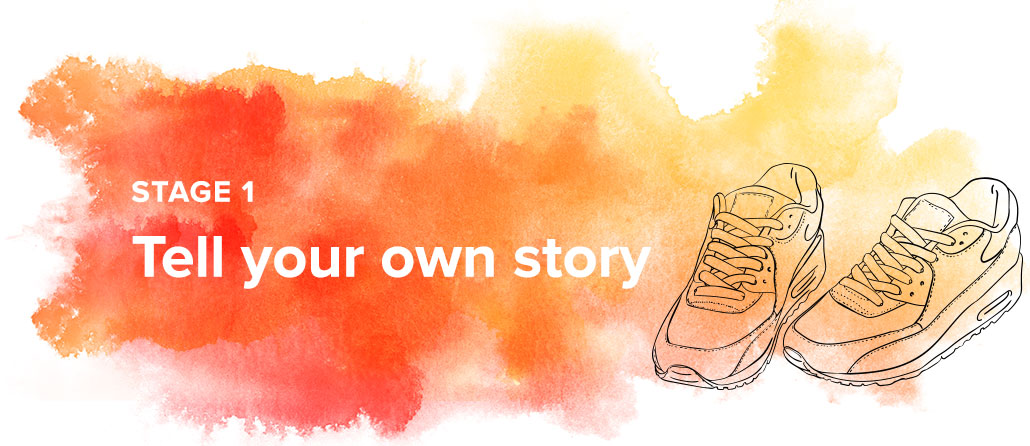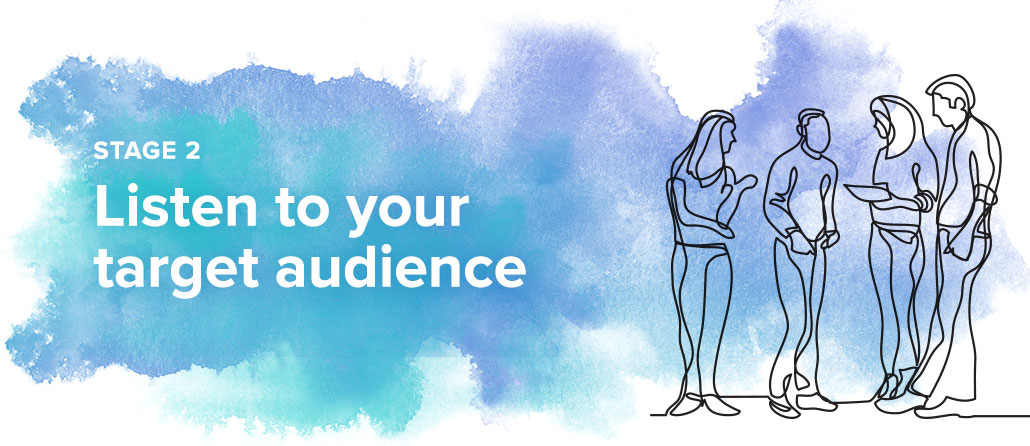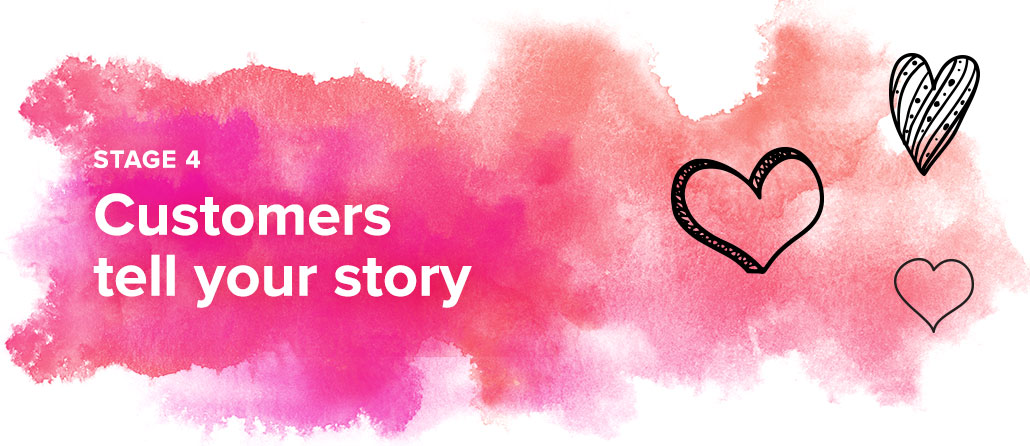Why Storytelling Matters For Your Brand
October 25, 2017Learn how the right brand story can transform the way people think, act, and purchase.
In 2006, science writer Joshua Foer took first place at the U.S. Memory Championship: a national competition in which contestants (Memory Athletes) memorize as much information as possible — from random numbers, to names, faces, and cards. In a 2012 TED Talk, Joshua explained that he won the competition after just one year of training with a master memorizer, who taught him a powerful technique for remembering called “elaborative encoding.” A simpler name for that? Storytelling.
Let’s say Joshua was tasked with memorizing a list of random items (the number 6, an elm tree, Jackie Chan, chocolate sprinkles, ruby slippers, shortbread cookies, Jessica Chastain, Florence, 18 bicycles, the ace of hearts, etc.) What he would do, in this case, is weave each item into an immersive story. He might imagine opening the door to his house and seeing the number 6 climbing up an elm tree, with Jackie Chan sitting on one of the branches pouring chocolate sprinkles on some ruby slippers. And so on, until each item to be memorized was encoded into a structured, ordered narrative. He’d memorize the story, and that’s how he’d memorize his list.
What does this tell us about storytelling and brand building? Namely, that storytelling is a crucial mechanism in helping consumers remember your brand — throughout the purchase deliberation process, and most importantly at the point of purchase.
But how do you tell a story that is immersive enough to stick in your target audience’s mind? That’s what we’re here to explain, in the 4 stages of brand building through storytelling.

Stories start with problems.
Cinderella’s problem was a severely flawed home life. Belle’s lament was that she couldn’t find a literate life partner. And the Velveteen Rabbit’s issue was that he couldn’t distinguish the real from the imaginary (which, given his situation as a fully conscious stuffed rabbit, was honestly pretty understandable.)
So, when it comes to writing your brand story, try asking yourself this question: What essential problem was your brand born out of?
Before he pioneered an athletic apparel revolution, Nike co-founder Bill Bowerman had been actively looking for a way to make lighter and faster running shoes for the track and field team he coached. His problem was that standard track shoes couldn’t grip to the new artificial surface his field was currently transitioning to. From that initial problem (and a chance encounter with a waffle iron) the Nike brand was born.
Now, maybe your story doesn’t involve repurposed mechanisms for delicious breakfast meals, but there was surely a problem at the heart of your company’s conception. Pinpoint that problem, and describe the human process that brought about its solution. Stories about real people solving real problems are inspiring, relevant, and valuable to consumers, because, despite the rise of Siri and Alexa, human connection still matters. Still, it’s important to remember that 9 times out of 10 it’s not just the bare bones plot line of your story that makes the difference. Brand storytelling is an art — but it’s one you can master if you know how to go about it.
Tips for telling a great brand story
Look at every angle
Given the infinite possibilities of the universe, and positing for the moment that the notion of free will exists (sorry, Brian Greene) there are legitimately a million things your company’s founders could have done with their time. So why did they start this company, making these products, and solving these problems? What decisions (and sacrifices) had to be made, in order that your company find continued relevance in the marketplace? Go granular and look at every angle of the human stories, including the pitfalls and difficulties, that led to the creation of your company. Stories of human victory over challenges are among our most remembered story lines. (Just ask Ovid.)
Identify a hero
Find the most compelling character in your brand’s origin story, and build your narrative around that person. Steve Prefontaine, or Pre, is the hero of the Nike brand story. He wasn’t a founder, or business man: He was an athlete.
Coached by Bowerman in the era of the waffle iron, he was an early adopter of Nike footwear, and he brought visibility to the brand by bringing Nike’s signature swoosh first across the finish line, time after time. Today, the Nike company tells stories of Pre like tales spun around a campfire. How he would send Nike shoes, along with handwritten notes, to other world-class runners in his circle, as well as promising young runners who’d captured his attention. How Nike shoes helped Pre reach some of his best running times. How Pre’s rebel attitude jived perfectly with the burgeoning upstart athletic shoe brand. And these stories live on, adding richness and humanity to the core of the Nike brand.
Make it immersive
Here are a few of the methods that Nike uses to make its brand story a living, breathing entity:
- A flagship store that serves as an interactive, multi-media museum to their heritage
- A two-day orientation for every Nike employee, starting the minute they sign their W-2
- A group of tech reps called Ekins (Nike spelled backwards) who get swoosh tattoos on their ankles, run on Bowerman’s old track and complete a nine-day rookie camp
- And way, way more
Now, it’s not strictly necessary for consumers or employees to physically ink your logo onto their skin, in order to get your brand story under their skin. But Nike’s commitment to brand storytelling is an illustration of the many different ways that a story can be told. Challenge yourself to tell your story in unusual ways, and you may be surprised at how far your imagination takes you.
Inject your story throughout your content strategy
If you’re not sure how to expand your brand story beyond the standard two paragraphs on your About page, a solid content marketing strategy is a great place to start.
As we’ve written in previous articles, content marketing is about publishing content (on many different platforms) with the goal of attracting your target customers, helping them find your website, and teaching them something new. The end result being, you establish yourself as a trusted source of information, and your brand and sales will grow.
How does your story fit into all of this? Every time you create a piece of content, make sure your story has a home in it. That doesn’t mean repeating the story of your company’s founding every time you hit publish — that would be boring. But it does mean ensuring that the spirit, personality, and soul of your story comes through in everything you put out.
Hire a professional
Every brand has a story. If you don’t, consider hiring a writer to help you find it. A skilled storyteller will help you uncover the hidden gems of your company’s narrative, and bring it out in a way that resonates with your target audience.

Once you’ve written your story and begun to tell it across platforms (we recommend Facebook, Twitter, and your blog to start) take some time to investigate the people who you’d ideally want to hear it. Your audience — your prospective customers — are real people. They have goals, worries, concerns, and lives that matter to them.
The more you listen to and engage with your target audience (when you aren’t trying to sell to them) the more you’ll be able to genuinely address their needs with your products. More than that, showing someone that you are listening to them is a highly effective way of showing respect, and building trust in a relationship. A story simply can’t be told without a listener to hear it. Why would someone want to listen to your story if you haven’t made it clear that you’re willing to listen to theirs?
How can I start listening to my prospective customers more effectively?
When we hear this question, the first thing we recommend is a BSTRO Marketing Audit. Among other key features, our marketing audit includes both a Persona Analysis for your prospective customers, as well as a Buyer’s Journey Mapping exercise that shines a light on their unique purchasing behaviors.
With this information, you’ll be able to understand who your target audience is, and where they congregate online — such as through messaging boards, social sites, or group hashtags. From there, all it takes is time, patience, and a listening ear.
Prospective customers converted into paying customers? Don’t stop listening!
To form a community of engaged consumers, it’s vital that you actively listen to your customers. Notice what’s being said on your company’s comment boards and customer service logs. Participate in and encourage conversation. Solicit customer photos and reviews whenever possible, and don’t be afraid to create branded hashtags and groups.
Listening to your customers (and soliciting further feedback) doesn’t just help you connect with your audience. It also helps you improve your products and services, since you’re finding out exactly what your customers want, directly. That kind of insight can beat hours of internal conversations around the conference room table — and can help your brand rise above the competition in the mind of your customers.

When your customers share their stories with you (for example, through product reviews, video testimonials, or tweets to your brand) show them you’ve been listening by sharing them back for your full audience to read. Positive reviews can light a fire under prospective customers: One study shows that 84% of people of people trust online reviews as much as personal recommendations from people they know. But sharing reviews and feedback to a larger audience does more than promote trust in your products: It makes your customers feel heard.
And while reviews (positive and negative) may be one of the most common ways that customers share stories with brands, they’re not the only types of content that you can hope to elicit.
For example, at BSTRO, we’ve helped many clients build out human-centered case studies featuring the stories of their repeat customers. This type of content is useful not only to build community and show your audience that you care about them, but also because it helps prospective customers understand how your product and service offerings solve real-world problems for real-world people.

If you’ve given your customers a memorable story — one that feels good, resonates with them and makes them smarter for knowing it — they will want to tell your story. And when customers start telling your story to the world, you win. You often hear the phrase: “The product sells itself,” but that’s probably only partially true. More likely, the product (or brand story) is so good that your customers want to sell it to their friends. Fans of your brand can swiftly become a powerful (unpaid) part of your marketing team, as brand ambassadors and brand evangelists that promote your story simply because they love it.
The fact that micro-influencers are a growing trend bears testament to the power of real people sharing stories about brands. But influencers (or anyone else) won’t be inspired to do so if the magic “it” factor of good storytelling isn’t there. You simply can’t fabricate inspiration — but you can dig out the human genius that already exists at the core of your company. And, with the right team in your corner, you can polish it just right, to reveal its brilliance.
Truth is, when people hear the unlikely tale of how Nike began, or learn about the legacy of Pre, they aren’t just thinking about shoes. They’re diving into the spirit of a brand. Nike fans wear Nike apparel because they want to exhibit their shared values of athleticism, creativity, invention, design, and dedication to achievement. Every time they put on a pair of Nike shoes, or a hat, or a t-shirt, they’re continuing the story begun by that brand — and they’re proud to do so. They wear Nike because they’re inspired by the story of Nike — and in so doing they inspire others to join the movement.
That’s the power of brand building through storytelling — and it’s an opportunity that’s available to every brand, and every company.
Could you use help to write your brand’s best possible story?
By Katie Rottner, Senior Copywriter
